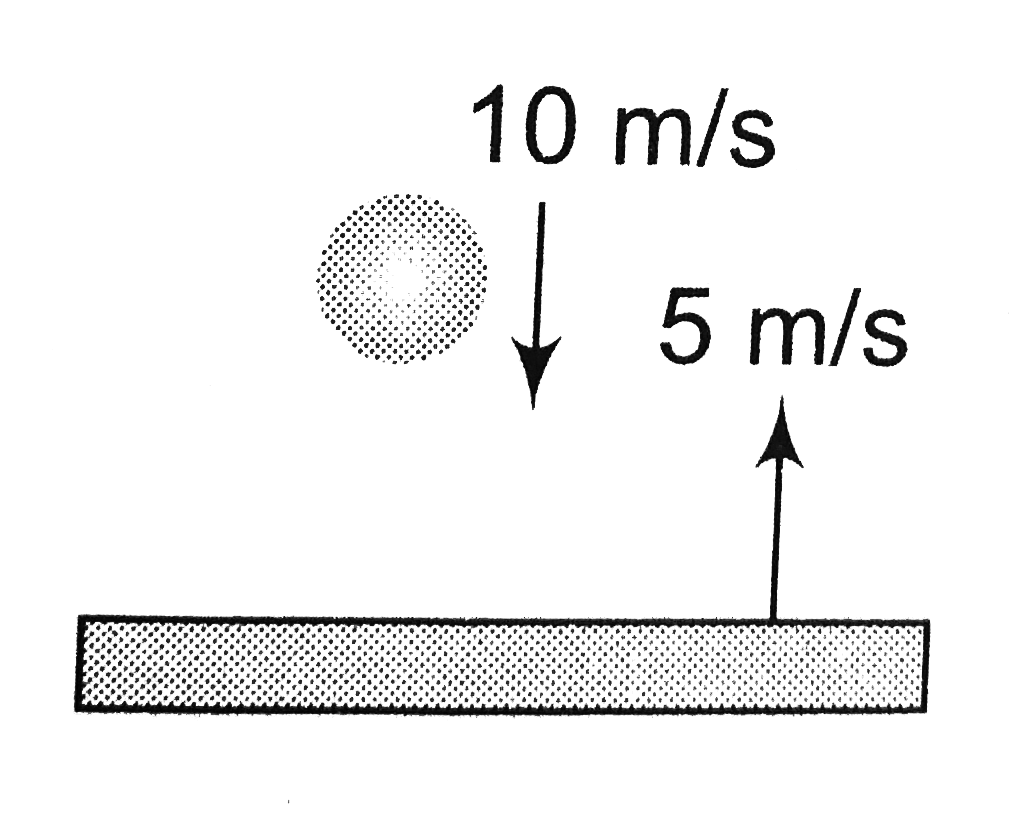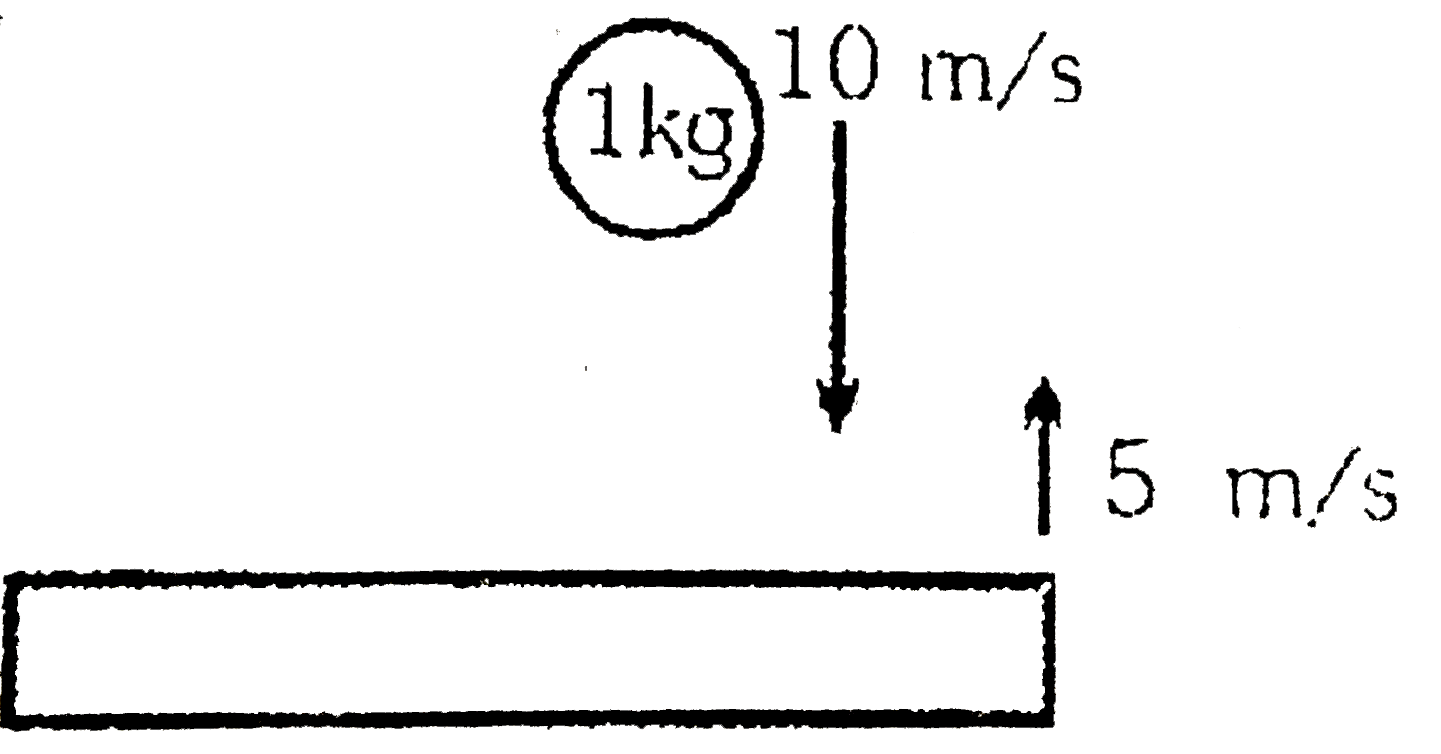A ball of mass 'm' moving with a speed 2v strikes a heavy wall elastically, which is moved with a velocity 'v'. The work done by the heavy wall on the ball is
12mv2
mv2
2mv2
None
The correct Answer is:C
Similar Questions
A ball of mass m moves with speed v and stricks a wall having infinite mass and it returns with same speed then the work done by the ball on the wall is
View SolutionA ball of mass 1kg strikes a heavy plarform elastically, moving upwards with a velocity of 5m/s . The speed of the ball just before the collision is 10m/s downwards. Then the impulse imparted by the platform on the ball is

View Solution
Knowledge Check
A ball of mass m moves with speed v and stricks a wall having infinite mass and it returns with same speed then the work done by the ball on the wall is
AZeroBmvjoe–sCm/vjoe–sDv/mjoe–sA ball of mass 1kg strink a heavy platform, elastically, moving upwards with a velocity of 5m/s. The speed of the ball just begore the collision is 10m/s downwards. Then the impulse imparted by the platform on the ball is :-
 A15N−sB10N−sC20N−sD30N−s
A15N−sB10N−sC20N−sD30N−sA ball of mass 250 g moving with 20 m/s strikes a vertical wall and rebounds along the same line with a velocity of 15 m/s. If the time of contact is 0.1 s, the force exerted by the wall on the ball is
A87.5 NB12.5 NC−12.5 ND−87.5 N
A ball of mass m moving with velocity v collides head on elastically with another identical ball moving with velocity - V. After collision
View SolutionA ball of mass m moving with velocity v collides head on elastically with another identical ball moving with velocity - V. After collision
View SolutionA ball of mass m moving with speed v towards the right strikes a wall moving towards the left with speed u. Find the change in the K.E. of the ball if the collision is elastic.
View SolutionA ball of mass m moving with vel. V strikes head on elastically with a number of balls of same mass at rest in a line. Only one ball from other side moves with same velocity. Explain wy not two balls move simultaneously, each with ve. v/2 ?
View SolutionA ball of mass m moving with velocity V, makes a head on elastic collision with a ball of the same moving with velocity 2V towards it. Taking direction of V as positive velocities of the two balls after collision are.
View Solution
